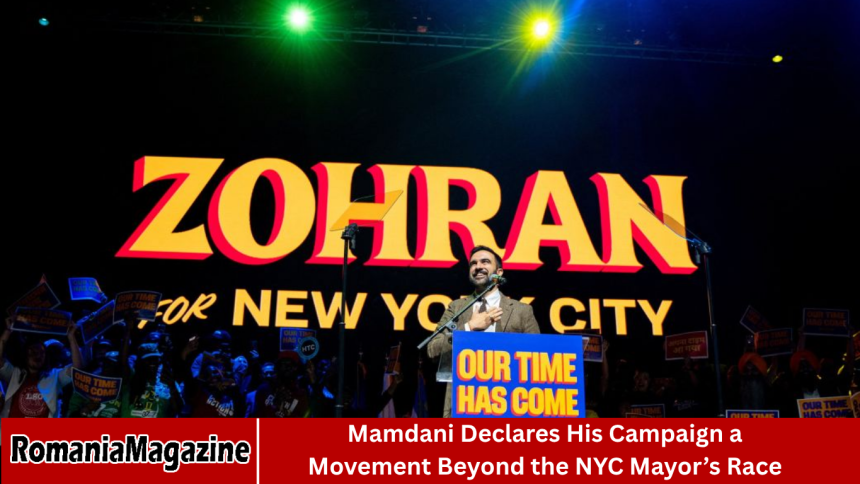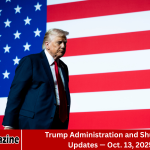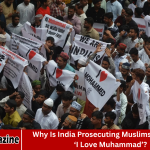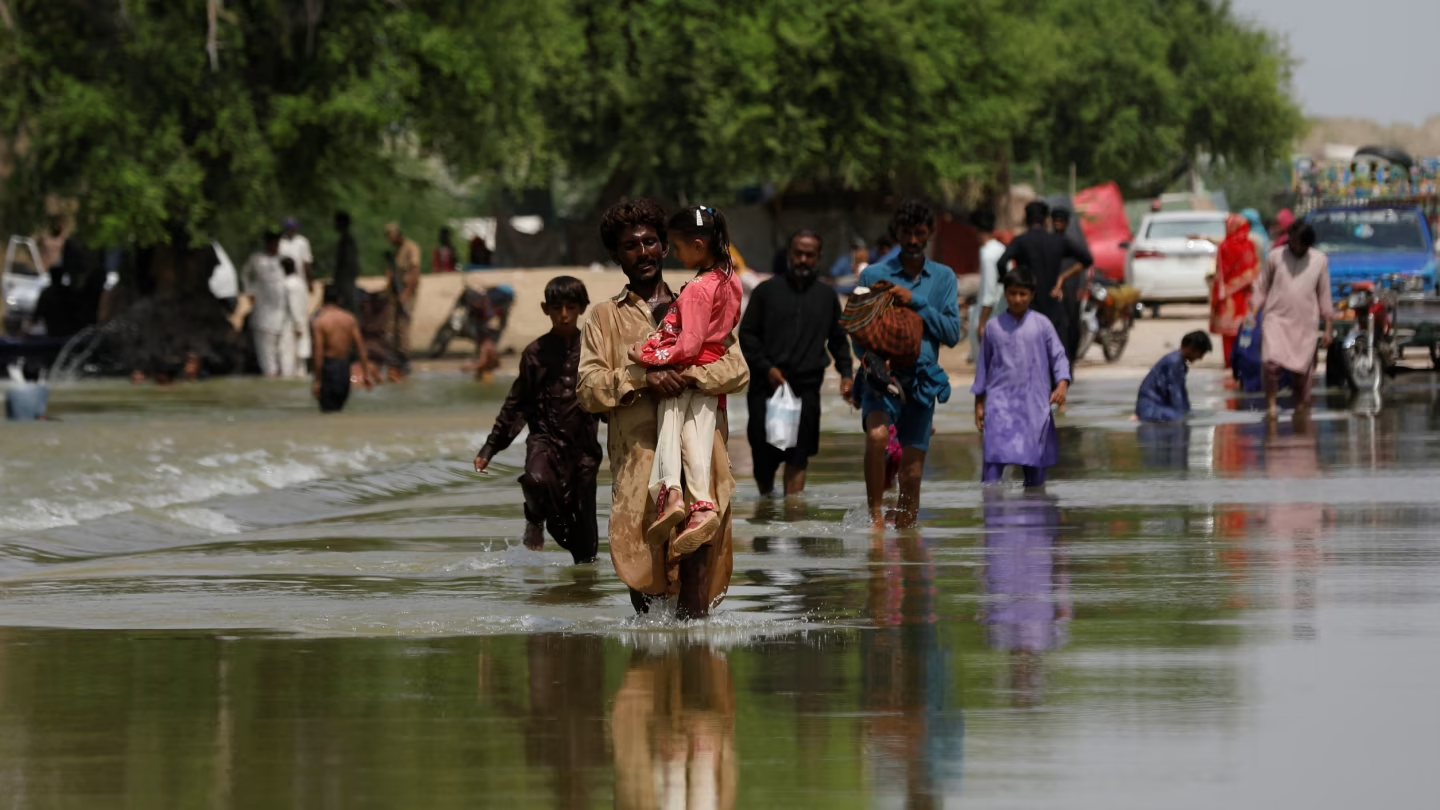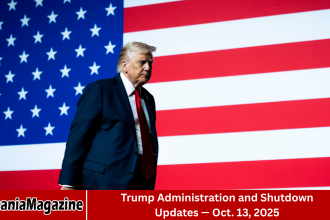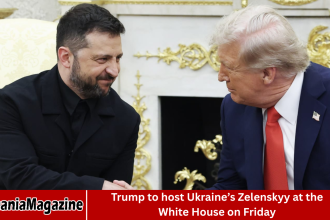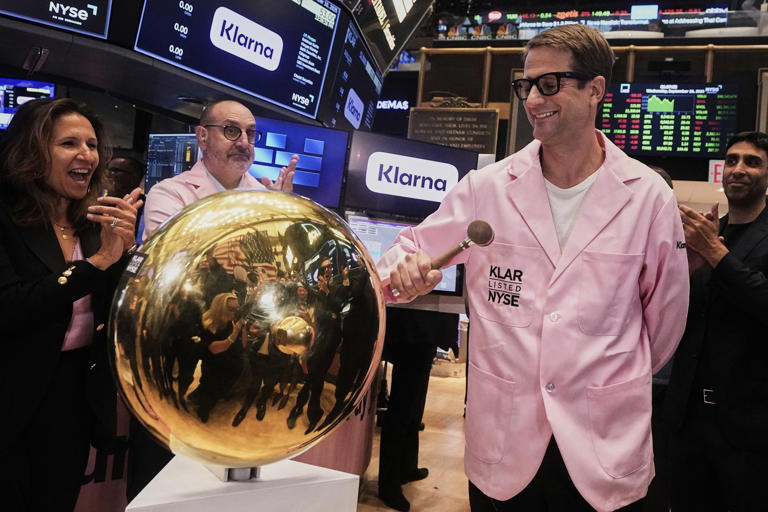The sound of chanting, drums, and raised voices filled the air as New York City Councilman Zohran Mamdani took the stage at a packed rally in Queens. But this was no ordinary campaign event. Mamdani, surrounded by supporters waving signs that read “Housing for All.”
- A Rising Progressive Voice in NYC Politics
- A Campaign Rooted in Community Organizing
- Beyond the Mayor’s Office: A Vision for Systemic Change
- The Symbolism of the Rally
- Reactions from the Political Establishment
- A Movement That Transcends Elections
- Challenges Ahead
- The Broader Implications of Mamdani’s Movement
- The Cultural Moment
- Looking Forward
- Frequently Asked Question
- Who is Zohran Mamdani?
- What does Mamdani mean by a “movement beyond the mayor’s race”?
- What are the key issues in Mamdani’s platform?
- How is Mamdani’s campaign different from traditional political campaigns?
- Who supports Mamdani’s campaign?
- What challenges does Mamdani face in the NYC mayoral race?
- What impact could Mamdani’s movement have on NYC politics?
- Conclusion
“Justice for Workers,” and “New York for the People,” declared that his campaign for mayor was not just about winning City Hall—it was about building a movement that could transform the very fabric of New York City politics.
Mamdani, known for his fiery progressive rhetoric and grassroots organizing roots, has positioned himself as a representative of a new generation of left-wing leaders who want to take their political activism beyond elections. His rally wasn’t just a call for votes—it was a call to action.
More Read: Trump Administration and Shutdown Updates — Oct. 13, 2025
A Rising Progressive Voice in NYC Politics
Zohran Mamdani, an Indian-Ugandan American and the son of acclaimed filmmaker Mira Nair, first rose to prominence as a Democratic Socialist representing Astoria in the New York State Assembly. His activism and political identity were forged through years of organizing for housing justice, tenants’ rights, and immigrant advocacy.
From the beginning, Mamdani stood apart from traditional New York politicians. While others focused on political calculations and endorsements, Mamdani focused on organizing—door-knocking, holding teach-ins, and mobilizing community members to demand tangible change.
His legislative priorities in Albany reflected that same ethos: rent stabilization, taxing the ultra-wealthy, and investing in public housing. As his popularity grew, so did his influence among the city’s progressive base.
By 2025, Mamdani had become one of the most recognizable faces of the Democratic Socialists of America (DSA) in New York, alongside figures like Alexandria Ocasio-Cortez and State Senator Julia Salazar.
His decision to run for mayor was seen by many as the natural next step in his political journey—but his campaign’s tone and structure suggested something deeper.
A Campaign Rooted in Community Organizing
At the rally, Mamdani emphasized that his campaign was about more than election day—it was about power. “We’re not here to win one office,” he said. “We’re here to build the infrastructure of resistance, solidarity, and hope that will outlast any administration.”
His campaign headquarters looks less like a typical political office and more like a community center. Volunteers hold mutual aid drives, renters’ rights workshops, and political education sessions. Mamdani’s field strategy prioritizes organizing over advertising, focusing on creating durable networks of community trust.
This approach harks back to the strategies used by progressive movements across the country—such as Bernie Sanders’ presidential campaigns and local DSA efforts—to build long-term movements that persist beyond any single candidate.
Mamdani’s campaign also relies heavily on small donations, grassroots endorsements, and volunteer-driven canvassing. His supporters, many of whom are first-time political activists, see the campaign as an opportunity to redefine what civic participation means in a city often dominated by big money and establishment politics.
Beyond the Mayor’s Office: A Vision for Systemic Change
At the heart of Mamdani’s movement is a clear vision: a New York City that works for everyone, not just the wealthy few.
His platform emphasizes affordable housing, universal healthcare access at the city level, expanded public transit, and a Green New Deal for New York that would create thousands of union jobs in renewable energy and infrastructure.
Mamdani has also been outspoken about police reform, calling for budget reallocations from the NYPD toward community-based safety programs and mental health services. His stance has earned him both fervent support and sharp criticism.
But what truly distinguishes Mamdani’s approach is his insistence that political transformation must come from the bottom up. “We cannot legislate justice from the top down,” he said. “We must organize it from the streets, the workplaces, the homes, and the classrooms.”
To his followers, that philosophy resonates deeply. “Mamdani isn’t just telling us to vote,” said Elena Rodriguez, a housing activist who attended the rally. “He’s telling us to take ownership of our power as people.”
The Symbolism of the Rally
The rally itself was a carefully orchestrated display of movement energy. Rather than being held at a downtown venue, it took place in Queensbridge Houses—the largest public housing complex in the United States.
That location choice symbolized Mamdani’s core message: that working-class and marginalized communities are the heart of his campaign. Speakers included union organizers, public school teachers, climate activists, and tenants from across the city. Music, poetry, and chants filled the event, giving it the feel of both a protest and a celebration.
One striking moment came when Mamdani shared the stage with a group of delivery workers who had been organizing for better wages and working conditions. “These are the people who keep our city running,” he said. “Their struggle is our struggle.”
The crowd responded with a chant that has since become a campaign slogan: “We move together!”
Reactions from the Political Establishment
Mamdani’s campaign has ruffled feathers in City Hall and beyond. Some establishment Democrats have dismissed his rhetoric as unrealistic or divisive. Others, however, have quietly acknowledged that his growing support base poses a real challenge to more moderate candidates.
Political analysts suggest that even if Mamdani doesn’t win the mayor’s race, his movement could shift the city’s political discourse. “Mamdani’s campaign could do what Sanders did nationally—move the center of gravity to the left,” said Dr. Karen Li, a political science professor at NYU.
His call for a citywide rent freeze, expanded public ownership, and redistribution of wealth resonates with many New Yorkers struggling with the rising cost of living. Even some skeptics concede that his ideas are shaping the policy conversation.
A Movement That Transcends Elections
Mamdani’s team insists that their project is as much cultural as it is political. They talk about changing narratives—about who deserves power, what government is for, and how people can hold it accountable.
His campaign volunteers often describe themselves as organizers first, campaigners second. They see their work as laying the groundwork for a long-term transformation of New York’s political culture—building networks of solidarity that will endure far beyond election season.
In this sense, Mamdani’s “movement beyond the mayor’s race” isn’t just a slogan—it’s a strategic framework. It’s about cultivating a new generation of activists and community leaders who will continue fighting for justice in every neighborhood, regardless of electoral outcomes.
Challenges Ahead
Despite the enthusiasm surrounding Mamdani’s campaign, he faces formidable challenges. The mayoral race is crowded, and his opponents have deep pockets and institutional backing.
Critics argue that his proposals—such as large-scale rent forgiveness and public control of utilities—are financially unfeasible or politically impractical. Moreover, New York’s political machinery is notoriously resistant to outsider candidates.
Winning citywide office requires a broad coalition, including moderate Democrats, unions, and community organizations—some of which remain skeptical of Mamdani’s uncompromising approach.
Still, his team remains undeterred. “We’re not afraid of losing,” said campaign manager Aisha Rahman. “What we’re afraid of is not fighting.”
The Broader Implications of Mamdani’s Movement
Whether Mamdani wins or not, his campaign is already leaving a mark on the city’s political landscape. It is galvanizing grassroots energy, pushing policy discussions leftward, and giving a voice to communities often ignored by mainstream politics.
His campaign reflects a broader shift happening in cities across the United States—from Chicago to Los Angeles—where progressive candidates are reframing local politics as a space for transformative change. These leaders are not content with incremental reforms; they are seeking to challenge the underlying systems of inequality.
In many ways, Mamdani’s message echoes national progressive movements advocating for housing as a human right, climate justice, and economic democracy. His campaign demonstrates how local politics can serve as a testing ground for national ideas.
The Cultural Moment
Part of Mamdani’s appeal lies in his ability to blend politics with culture. His background as the child of immigrants and artists gives him a unique sensibility—he connects policy with storytelling, activism with art.
He often quotes poets and musicians at rallies, drawing connections between cultural expression and political struggle. “Art is a weapon of the people,” he told the crowd in Queens. “It reminds us of who we are and what we can be.”
This blending of activism, art, and organizing has attracted a diverse following that includes young creatives, community workers, and immigrant families. It’s a reminder that political movements are as much about identity and imagination as they are about legislation.
Looking Forward
As the campaign progresses, Mamdani continues to hold rallies in all five boroughs, emphasizing solidarity across communities divided by race, class, and geography. His strategy is clear: build power from the ground up.
Polls show him trailing behind the establishment front-runners, but his momentum is undeniable. Each event draws larger crowds, and his small-donor contributions are growing rapidly.
For Mamdani, though, success isn’t measured only in votes. “If all we do is win an election, we’ve failed,” he said at the end of the rally. “If we build a movement that can’t be broken—then we’ve already won.”
Frequently Asked Question
Who is Zohran Mamdani?
Zohran Mamdani is a Democratic Socialist politician representing Astoria in the New York State Assembly. Born to Indian-Ugandan parents, he has built his career on grassroots activism, focusing on tenants’ rights, housing justice, and economic equity.
What does Mamdani mean by a “movement beyond the mayor’s race”?
When Mamdani says his campaign is a “movement beyond the mayor’s race,” he means that his focus extends beyond winning political office. His goal is to build a long-term grassroots movement that empowers New Yorkers to advocate for systemic change in housing, labor, and climate justice.
What are the key issues in Mamdani’s platform?
Mamdani’s platform centers on affordable housing, public ownership of utilities, climate action through a local Green New Deal, police reform, and greater investment in public services. He also supports stronger tenant protections and fair wages for workers.
How is Mamdani’s campaign different from traditional political campaigns?
Unlike traditional campaigns that rely on major donors and consultants, Mamdani’s campaign is powered by volunteers, small donations, and community organizing. It functions as both a political effort and a social movement, emphasizing direct engagement and collective empowerment.
Who supports Mamdani’s campaign?
Mamdani’s campaign has drawn support from grassroots organizations, progressive labor groups, and members of the Democratic Socialists of America (DSA). Many young voters, tenants, and community organizers see him as a voice for the working class.
What challenges does Mamdani face in the NYC mayoral race?
Mamdani faces tough competition from establishment-backed candidates with more funding and broader institutional support. He also faces skepticism from moderates who see his proposals as too radical or financially unrealistic.
What impact could Mamdani’s movement have on NYC politics?
Even if he doesn’t win, Mamdani’s movement could have a lasting influence by pushing mainstream candidates to adopt more progressive policies, strengthening grassroots networks, and inspiring a new wave of civic engagement across the city.
Conclusion
Zohran Mamdani’s campaign represents something larger than a bid for political office—it represents a vision of what participatory democracy could look like in the 21st century. By framing his mayoral run as part of a larger social movement.
He’s challenging New Yorkers to rethink not just who governs them, but how they govern themselves. Whether he ultimately becomes mayor or not, Mamdani’s insistence that power must come from the people—and stay with the people—could reshape New York City politics for years to come.

